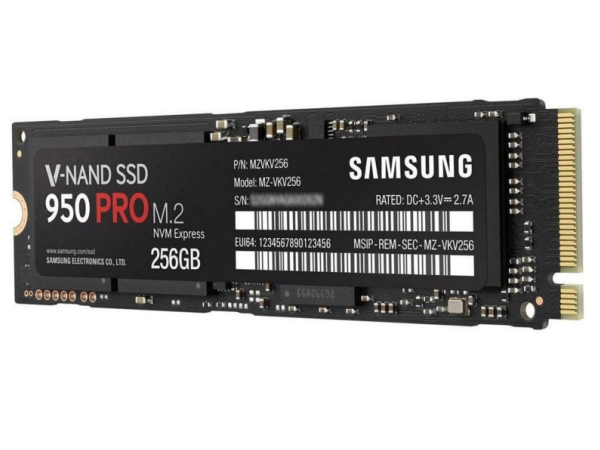Samsung 950 Pro 256GB RAID Report
Why you can trust Tom's Hardware
Conclusion
Using RAID 0 to increase the storage performance of a desktop used to be in vogue. Then it wasn't. Now it is again. Once upon a time, you could sling a couple of Western Digital Raptors together, fire up a level in Battlefield 2 before anyone else, get the plane and dominate the map. Solid-state drives like Samsung's 950 Pro deliver orders of magnitude more performance than those mechanical products.
After poring over our results, we figured out why a single drive's latency is better than two 950 Pros in RAID 0. In a striped configuration, the array uses Microsoft’s RAID driver and not Samsung’s custom NVMe software. Windows sees the array as an Intel chipset volume. It's possible that Intel might be working on a custom RAID 0 driver, but we aren't counting on it. Fortunately, although Samsung's driver enables lower latency, we doubt anyone will "feel" the difference.
Using RAID to increase capacity or add redundancy is another story. Two 256GB 950 Pros don't make a lot of sense from a capacity standpoint since one 512GB drive costs less than the pair together. Three drives in RAID 5 are technically viable, but you have to be willing to lose one drive's worth of capacity to distributed parity. Aside from those corner cases, two NVMe SSDs in RAID just isn't worth the trouble or expense. The technology is back to where it started: in the server rack and high-performance workstations.
Now that we have the hardware capable of insanely high storage performance, we need software to take advantage of it. I'm not closing the book on RAID for the sake of higher performance just yet. In time, the applications will catch up and we'll again look for ways to squeeze more speed out of our components. Until then, storage is in a really good place.
MORE: Best SSDs For The Money
MORE: Latest Storage News
MORE: Storage in the Forums
Chris Ramseyer is a Contributing Editor for Tom's Hardware, covering Storage. Follow him on Twitter and on Facebook.
Follow Tom's Hardware on Twitter, Facebook and Google+.
Get Tom's Hardware's best news and in-depth reviews, straight to your inbox.

Chris Ramseyer was a senior contributing editor for Tom's Hardware. He tested and reviewed consumer storage.
-
USAFRet Reply17700323 said:Why do you expect gains in video games when everything relevant is loaded in RAM?
A lot of people do.
Assuming that the performance gains we saw with spinning disks in RAID 0 automagically does the same with SSD's. It does not. -
Tibeardius Did it have any sort of thermal throttling occur? These pcie m.2 drives can get pretty hot.Reply -
Integr8d "Once upon a time, you could sling a couple of Western Digital Raptors together, fire up a level in Battlefield 2 before anyone else, get the plane and dominate the map."Reply
Someone just explained 24 months of my life:) -
HT ReplyWhy do you expect gains in video games when everything relevant is loaded in RAM?
that's the point of faster drives, loading it all in ram. do you think it magically appears there by itself ? -
HT good article Chris, i'm intrigued by your statement of the samsung driver vs the M$ one, i would've liked to see some numbers comparing the two.Reply -
Virtual_Singularity Interesting article. Also: am a lil' dumbfounded at how much the price of the 850 pro series has dropped since the holidays, a mere 3+ months ago...Reply
